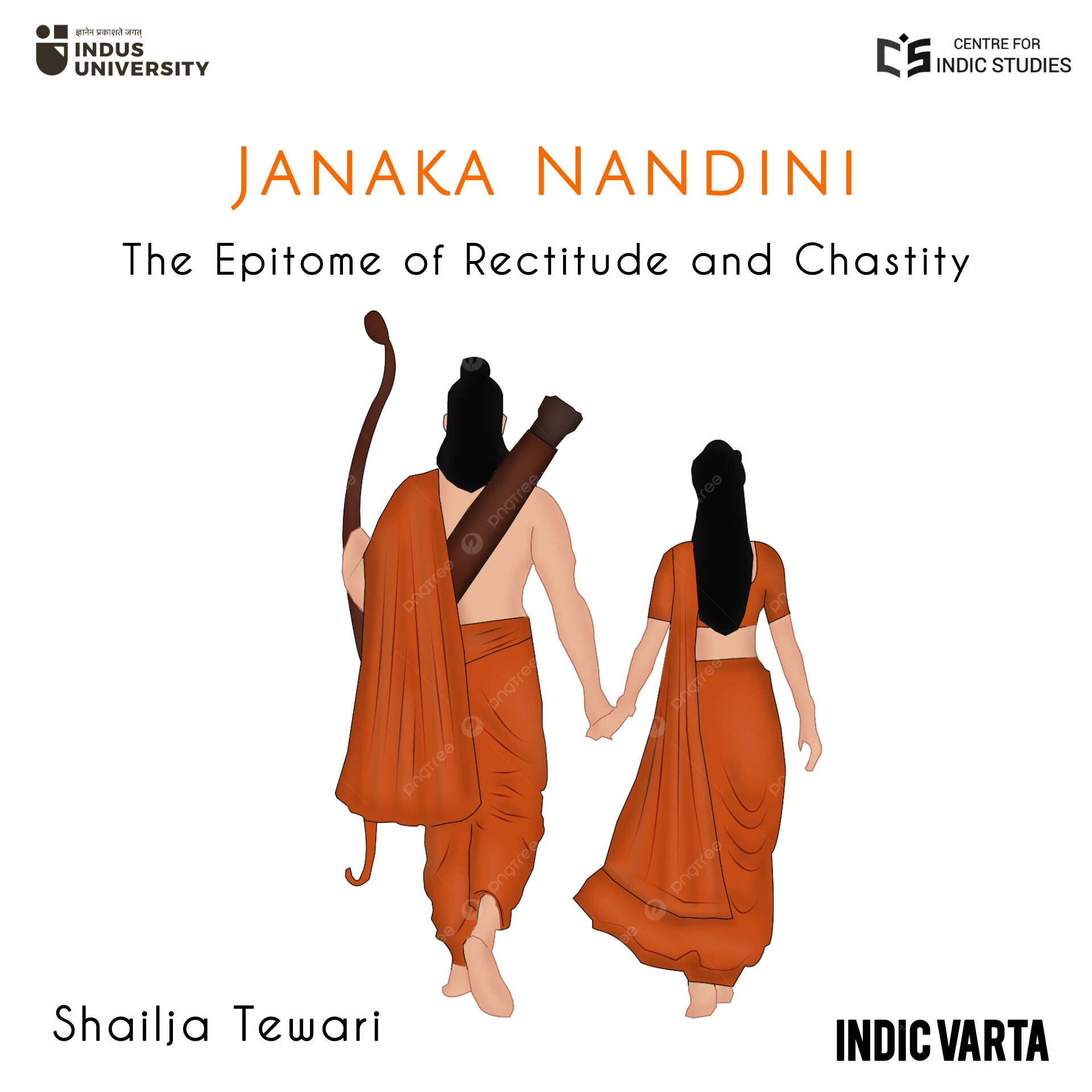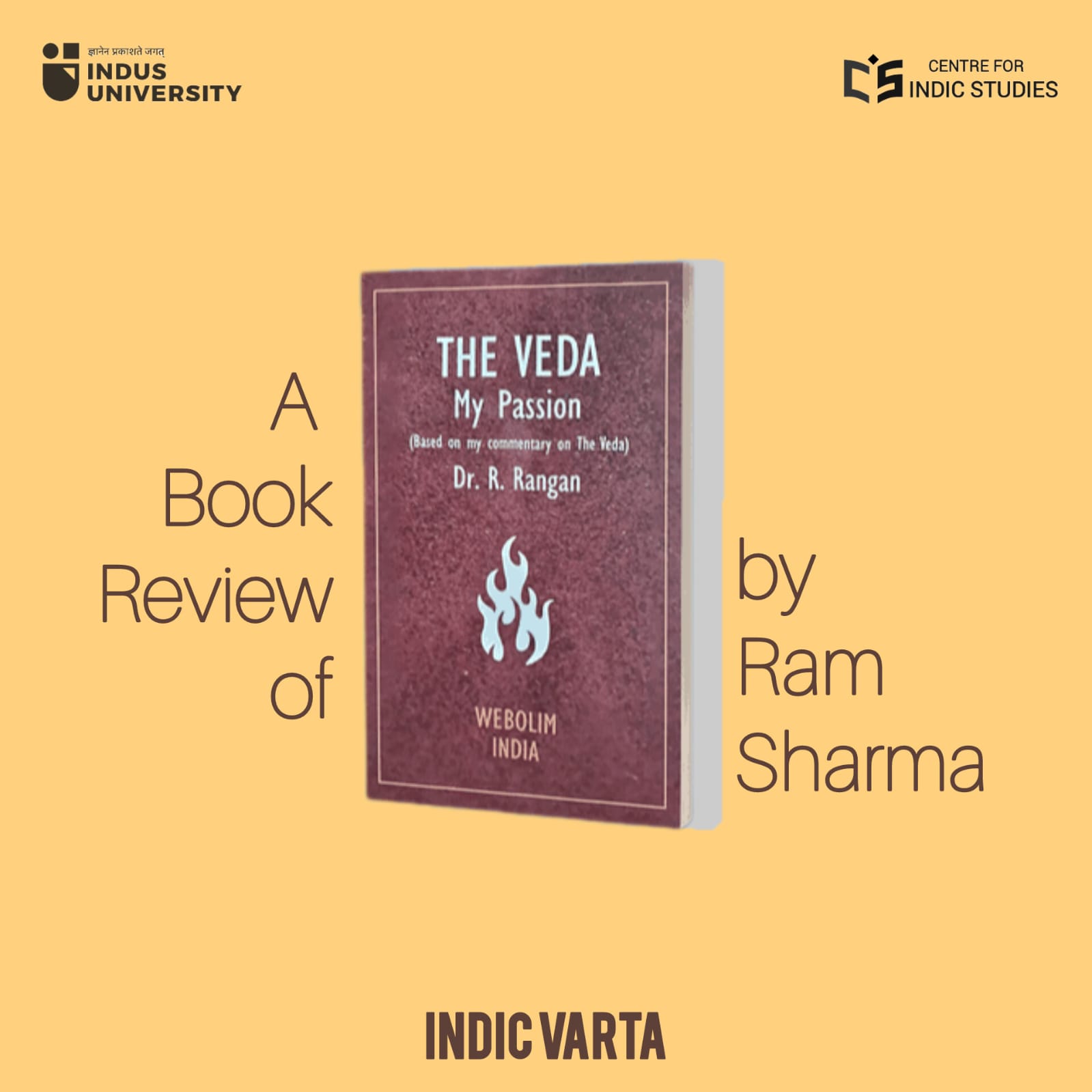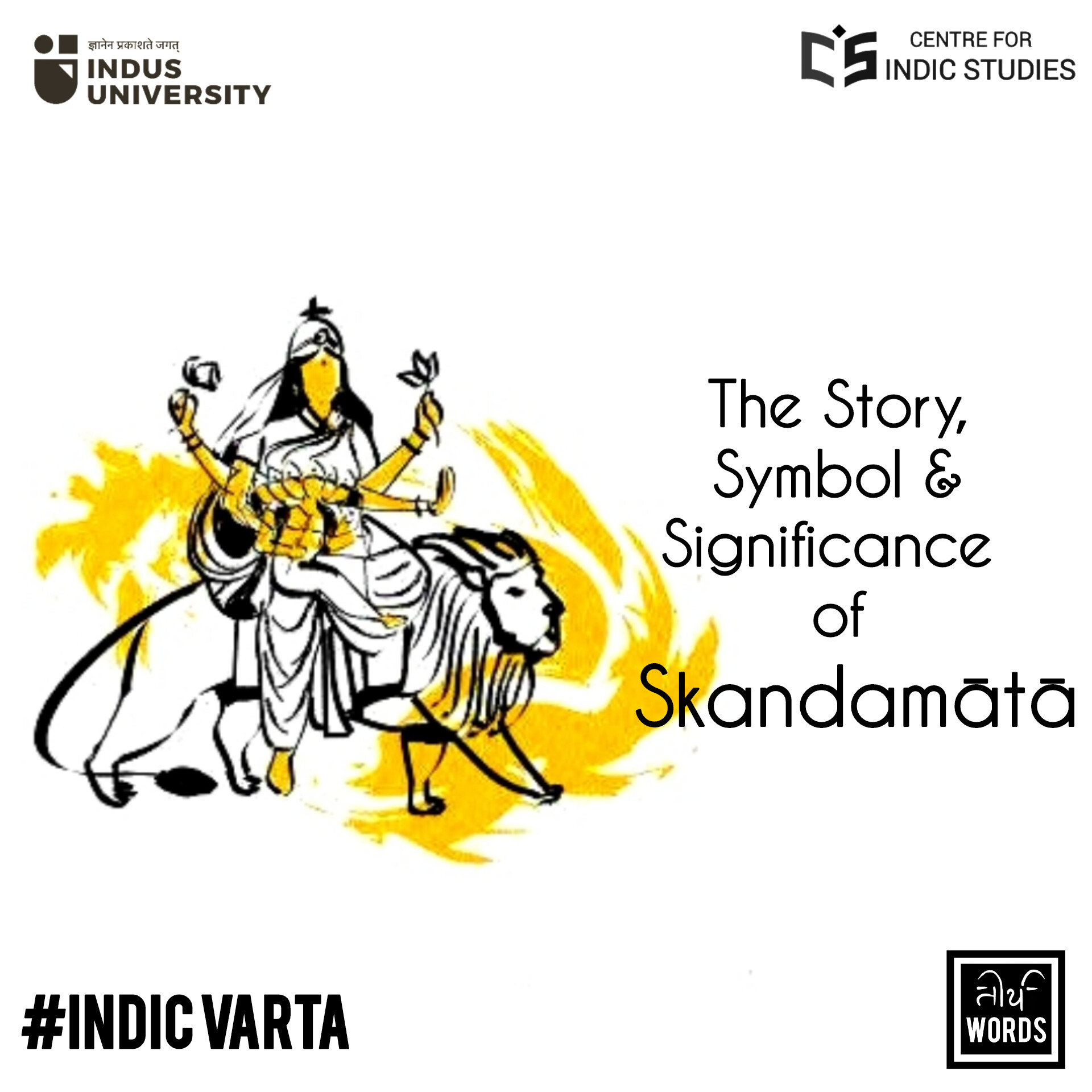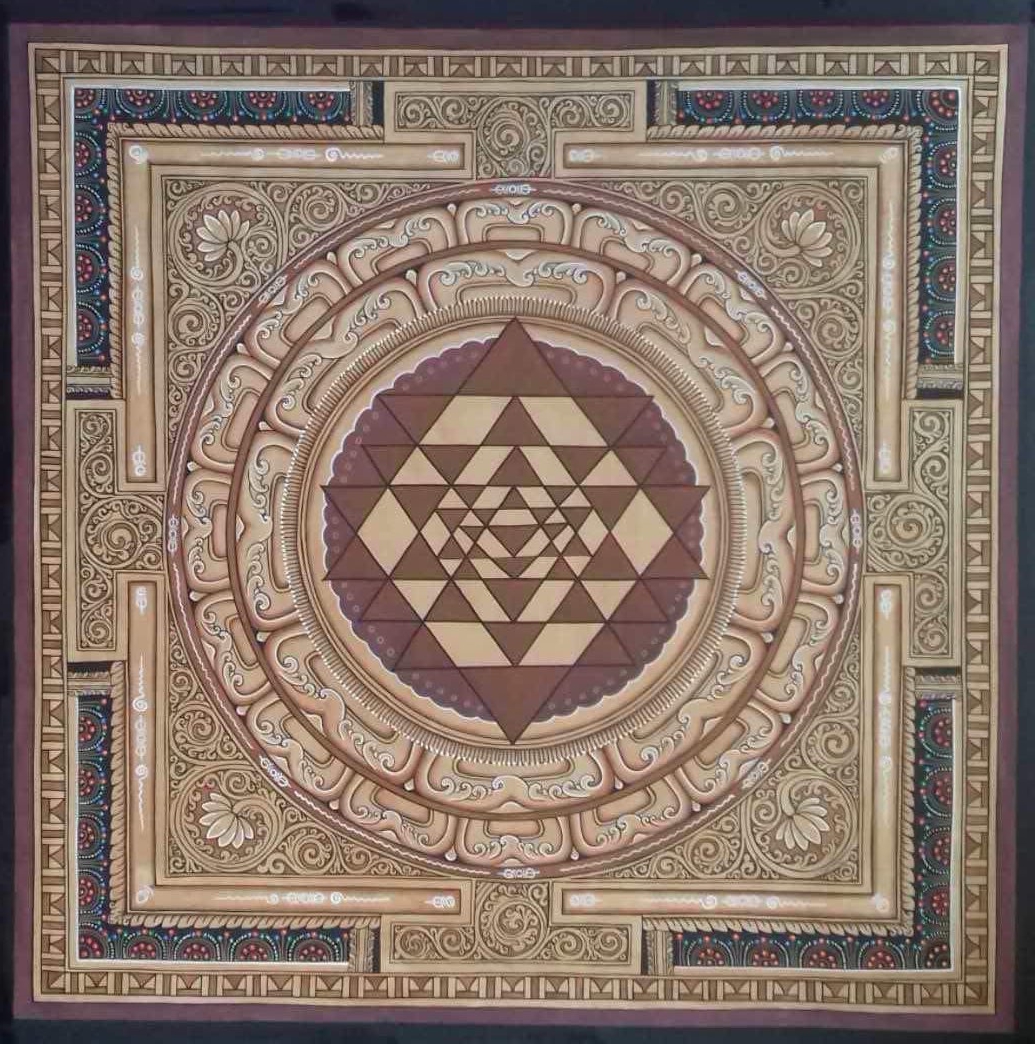- Visitor:65
- Published on: 2025-05-06 06:19 pm
Janaka Nandini: The Epitome of Rectitude and Chastity
Devi Sita’s character also provides a nuanced understanding of empowerment. Unlike conventional portrayals of empowerment that emphasize overt rebellion or aggression, Devi Sita's strength is rooted in emotional intelligence, moral fiber and the courage to remain true to her values even when faced with profound situational pressures. For contemporary women, this redefinition of empowerment underscores the importance of resilience and ethical integrity. Through Sita, we see that empowerment is not a unilateral concept defined by external achievements or societal approval, it is intrinsically linked to one’s sense of integrity of the soul. In the contemporary context, Sita’s story shows that the empowerment process is fundamentally about sacrifice and determination, encouraging women to articulate their moral grounds in the face of adversity. In addition, Sita's unwavering fidelity and loyalty can be enthusiastic to the loyalty and faithfulness a woman should have in her personal life.

उद्भवस्थितिसंहारकारिणीं क्लेशहारिणीम्।
सर्वश्रेयस्करीं सीतां नतोऽहं रामवल्लभाम्।। (Ramayana 1.5)
[I bow to Sita the beloved consort of Sri Rama, who is responsible for the creation, sustenance and dissolution (of the universe), removes afflictions and begets all blessings.]
Ram Navami, celebrated in the first week of April, marks the birth anniversary of Lord Ram, following this auspicious occasion, devotees prepare to observe Sita Navami on May 6th this year. Sita Navami, also referred to as Janki Navami or Sita Jayanti, commemorates the birth of Goddess Sita, who is revered as one of the incarnations of Goddess Lakshmi, embodying purity, virtue, and devotion.
This celebration takes place on the ninth day, or Navami Tithi, during the Shukla Paksha (the waxing phase) of the month of Vaisakh in the Hindu lunar calendar. The narrative surrounding Goddess Sita's life is rich and complex, highlighting her as an embodiment of resilience and virtue. She is known for her deep devotion to Lord Rama. While textual references that specify the exact tithi of Sita's birth are limited, her story is most prominently captured in the ancient epic, the Ramayana. In this epic, Sita is introduced as the daughter of King Janaka of Mithila, who discovered her in a furrow while plowing a field as part of a ritual to appease the gods. Overcome by her beauty and spirit, King Janaka adopted Sita, raising her with love and care:
अथ मे कृषतः क्षेत्रं लांगलादुत्थिता ततः ॥
क्षेत्रं शोधयता लब्धा नाम्ना सीतेति विश्रुता ।
भूतलादुत्थिता सा तु व्यवर्धत ममात्मजा ॥ (Ramayana 1.66.13-14)
[One day I was ploughing the field to purify the land for the yagya. At that time a girl appeared from the land (Harai or Sita) ploughed with the front part of the plough. She was named Sita because she was born from Sita (the line drawn by the plough). My daughter who appeared from the earth gradually grew up and became mature.]
The celebration of Sita Navami not only deeply entrenches the historical and religious significance of Sita but also serves as a reminder of her unwavering strength and the values she represents in Hindu culture. Devotees engage in various rituals, prayers, and community gatherings to honor her legacy, reflecting upon themes of love, duty, righteousness (dharma), and the transformative power of devotion. As such, Sita Navami is not just a commemoration of a divine figure, but a profound celebration of ideals that resonate across centuries in Indian spiritual and cultural contexts. The festival holds immense cultural and religious importance, especially in the Mithila region, which spans across parts of southern Nepal and northern Bihar in India.
In my research, I could not find any specific scriptural reference to goddess Sita's birth tithi to fall on Vaishakha in the Shukla Paksha on the Navami tithi. However, one sect of the Ramanandi Sampradaya of Vaishnavas does believe this tithi to be the birth date of the goddess Sita. Their official website mentions, Sarveshvari Saketabiharini Sri Sita (Nitya-Biharini, and appearance day in Vibhuti-Loka: Vaishakha Shukla Navami, Tretayuga).
Cultural Significance and Influence
The cultural significance and influence of Sita, a pivotal figure in the Ramayana, transcends her narrative origins, deeply impacting various artistic and cultural expressions across generations. This section will explore the multifaceted reinterpretations of Sita in literature, dance, and film, demonstrating how her archetype evolves while consistently embodying themes of strength, resilience, and moral integrity.
In literature, Devi Sita has been reimagined by numerous authors who engage with her narrative to address contemporary issues such as gender dynamics, and societal expectations. These reinterpretations not only highlight Sita's enduring relevance but also invite critical discussions about the roles of women in both ancient and modern contexts. We encounter that Devi Sita’s character constantly inspires writers to bring in different dimensions of her character, even when if one tries to explore her in Valmiki’s Ramayana, it is found that her character was not about a lady who was dominated by male chauvinism, she was the woman of her own will and capable of taking strong decisions. When Rama was proceeding for exile, Rishi Vashistha exclaimed that, in the absence of Lord Rama, Sita was capable enough to rule the kingdom, this symbolises that she had inherent qualities of a ruler as well.
Similarly, in the realm of dance, Devi Sita’s character has inspired a diverse array of performances that range from traditional classical forms to innovative contemporary expressions. Choreographers and dancers utilize her story to explore themes of devotion, sacrifice, and empowerment, often emphasizing her emotional depth and complexity. These artistic interpretations not only celebrate her iconic status but also encourage audiences to reflect on their own cultural narratives and the values they convey. The significant episode of Devi Sita’s svayamvara and her abduction are portrayed with aesthetical effects in many traditional Indian dance forms. In Indonesia, Sita is depicted as Sinta and Sida in Thai Ramakien.
Moreover, Sita's representation in film serves as a powerful lens through which cultural values are both preserved and challenged. Cinematic adaptations have the ability to reach a global audience, enabling a reinterpretation of her character that resonates with modern viewers. Through various portrayals, filmmakers often grapple with Sita’s choices and the moral dilemmas she faces, prompting discussions around ethics, loyalty, and the evolving expectations of women in society.
Key Takeaways and Contemporary Relevance
Sita’s narrative begins with her being a strong and decisive figure for her intelligence and fortitude, rather than merely her physical beauty. This initial characterization subverts the notion that women are to be valued only for their appearance or subservience to men. Furthermore, throughout her trials, most notably her abduction by Ravana, Devi Sita’s resistance to victimhood demonstrates her strength and her steadfastness in the face of adversity.
Devi Sita’s character also provides a nuanced understanding of empowerment. Unlike conventional portrayals of empowerment that emphasize overt rebellion or aggression, Devi Sita's strength is rooted in emotional intelligence, moral fiber and the courage to remain true to her values even when faced with profound situational pressures. For contemporary women, this redefinition of empowerment underscores the importance of resilience and ethical integrity. Through Sita, we see that empowerment is not a unilateral concept defined by external achievements or societal approval, it is intrinsically linked to one’s sense of integrity of the soul. In the contemporary context, Sita’s story shows that the empowerment process is fundamentally about sacrifice and determination, encouraging women to articulate their moral grounds in the face of adversity. In addition, Sita's unwavering fidelity and loyalty can be enthusiastic to the loyalty and faithfulness a woman should have in her personal life.
Conclusion
Devi Sita is shown as a mother, a virtuous wife, a noble daughter and in many other roles, but the Ramayana does not confine the role of Sita to these domains only, she could be seen boldly putting forward her views and desires. For instance, during the time of exile when Sri Rama suggested her not to accompany him, she refused and argued not to stay at Ayodhya but to accompany him in exile. Sita Mata is also considered as an appropriate ruler to rule Ayodhya by Rishi Vashistha, in the absence of Shri Ram:
चीरे गृहीते तु तया समीक्ष्य नृपतेर्गुरुः ।
निवार्य सीताम् कैकेयीम् वसिष्ठो वाक्यमब्रवीत् ।।
न गन्तव्यम् वनम् देव्या सीतया शीलवर्जिते ।
अनुष्ठास्यति रामस्य सीता प्रकृतमासनम् ।। (Ramayana 2.37.21-23)
[Seeing Seetha accepting the piece of bark, Vasistha the king's preceptor prevented her and spoke thus to Kaikeyi. Oh, the woman without decorum! Seetha the princess shall not proceed to the forest. She will occupy the throne, which was awarded to Rama.]
This indicates that Sita Maa had those traits which proves her to be a good leader and ruler, which could be seen by Vashishtha Rishi. In the ‘Sundara Kanda’, she threatened Ravana that she can reduce him into ashes in one second through the power of her penance but she chose to preserve her austerities as Ravana was destined to be killed by a Raghuvanshi King. When Hanuman reached Lanka and offered to rescue Sita, she would have jumped on this opportunity (in our age); however, she asked Rama to prove his valor and strength once again by stamping his authority through his valor and strength.
We also find traces that Maa Sita did the Sandhya-pujan, austerity and all rituals with complete devotion, on this auspicious day of Sita Navami let us imbibe at least a tiny aspect out of the multifarious personality of devi Sita which remains equally useful today and to the centuries to come.
- 32 min read
- 7
- 0










